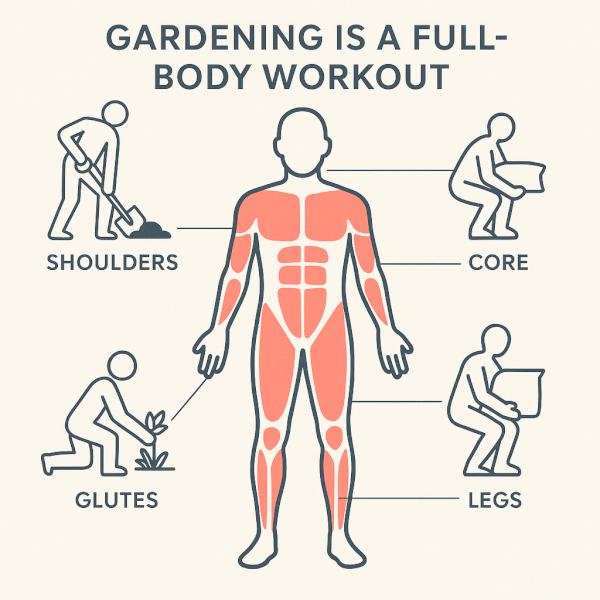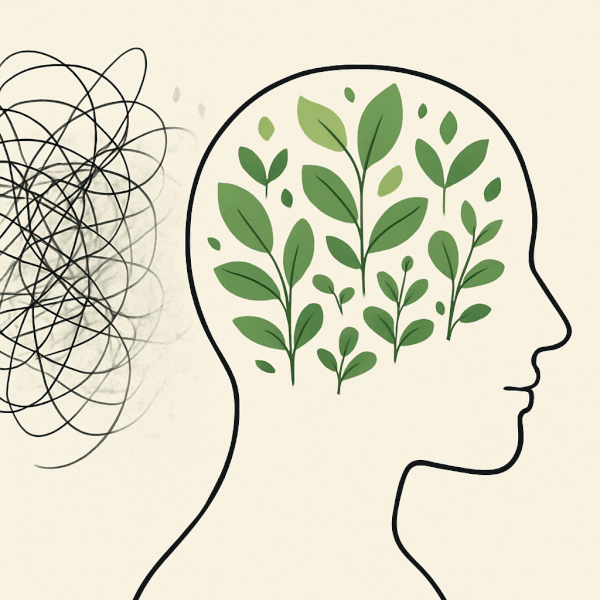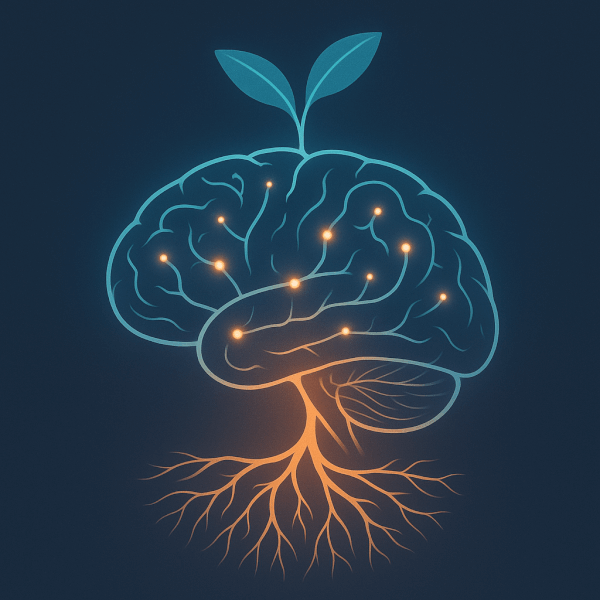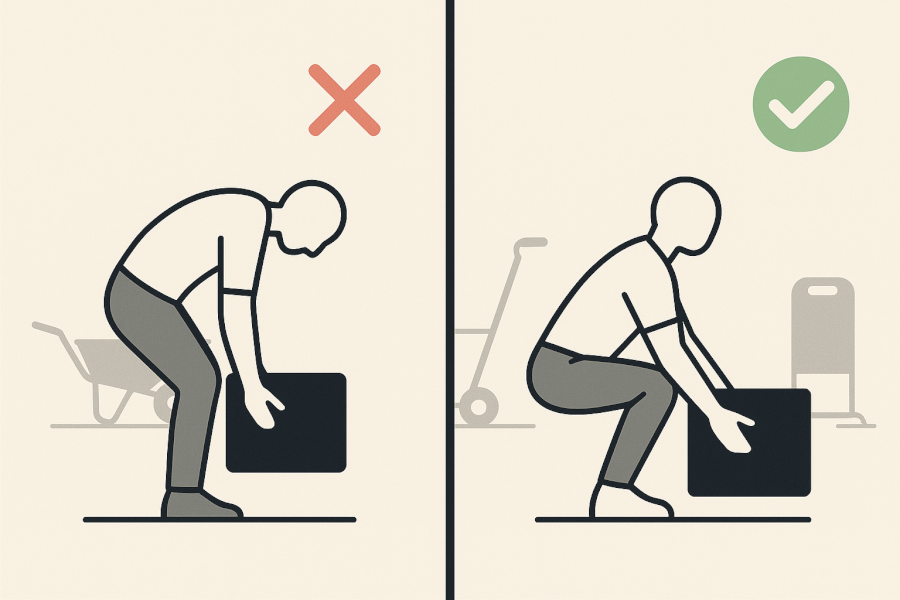Tired of the sterile, fluorescent-lit environment of the gym? For many, the search for an enjoyable and effective alternative to treadmills and weight racks feels endless. We seek a routine that not only strengthens the body but also soothes the mind. What if the answer isn’t a new fitness class, but an activity as old as humanity itself? Gardening is more than a simple hobby; it’s a science-backed prescription for total-body wellness.
This article breaks down the remarkable cascade of physical, mental, and cognitive benefits that unfold during a single 60-minute gardening session. We will explore how your garden doubles as a full-body gym, acts as a powerful mental reset button, and even triggers hidden neurological perks that enhance your long-term health. Forget the membership fees—your most potent wellness tool might be waiting in your own backyard.
The physical powerhouse: your garden as a gym

While it may feel like a relaxing pastime, gardening is a legitimate, moderate-intensity workout. It deconstructs complex physical movements into a series of practical, functional exercises that build strength, improve cardiovascular health, and connect you with the outdoors. By quantifying these physical benefits, we can see how digging, weeding, and planting constitute a powerful form of exercise.
Calorie-burning breakdown: from digging to weeding
The Centers for Disease Control and Prevention (CDC) recognizes gardening as a moderate-intensity exercise, putting it on par with activities like brisk walking or cycling on a level surface. The exact number of calories you burn depends on the specific task and your body weight, but the energy expenditure is significant.
Here is a breakdown of the estimated calories burned during one hour of common gardening tasks for a 155-pound individual, based on data from peer-reviewed health studies.
| Task | Average calories burned (155-lb person) |
|---|---|
| Digging / Shoveling | 400 – 600 |
| Weeding | 200 – 400 |
| Raking | 200 – 400 |
| Planting Seedlings | 200 – 400 |
| Mowing (push mower) | 300 – 450 |
A surprising full-body workout
Gardening is a form of functional fitness, engaging nearly every major muscle group in a coordinated way. Unlike isolated gym exercises, these movements build practical strength for everyday life.
- Lifting bags of soil and compost: This classic garden chore is a fantastic compound exercise. When done with proper form (squatting, not bending), it works the glutes, quadriceps, hamstrings, back, and shoulders.
- Digging and shoveling: This high-intensity activity deeply engages the core for stability while working the biceps, triceps, and shoulders with every scoop.
- Raking and hoeing: The push-pull motion of raking is an excellent workout for the arms, back, and shoulders, building upper-body endurance.
- Weeding and planting: While less intense, these tasks are crucial for improving hand strength, grip, and dexterity—motor skills that often decline with age.
Boosting vitamin D and immune health naturally
Spending an hour in the garden provides a crucial dose of sunlight, prompting your body to synthesize Vitamin D. According to the Mayo Clinic on the benefits of gardening, this essential vitamin is vital for bone health because it helps the body absorb calcium. Beyond bone density, Vitamin D plays a key role in regulating the immune system, helping your body fight off infections and reducing inflammation.
The mindful escape: rewiring your brain in 60 minutes

The profound sense of peace you feel after an hour in the garden isn’t just a feeling; it’s a neurochemical event. The physical act of gardening directly triggers mental and emotional benefits, bridging the gap between your body and mind in a way few other activities can.
Reducing cortisol: how gardening combats the stress hormone
Cortisol is the body’s primary stress hormone. While useful in short bursts, chronically elevated levels can lead to anxiety, weight gain, and other health issues. Gardening provides a powerful antidote. A landmark meta-analysis on gardening health benefits found that gardening can lower cortisol levels more effectively than other leisure activities, such as reading indoors. The gentle, repetitive, and rhythmic nature of tasks like watering, pruning, or weeding can induce a meditative state, calming the nervous system and pulling you into the present moment.
Increasing serotonin and dopamine: the science of a ‘gardener’s high’
While your body is busy lowering stress hormones, it’s also increasing the production of mood-boosting neurotransmitters.
- Serotonin: Often called the “feel-good” chemical, serotonin regulates mood, happiness, and anxiety. The combination of light physical activity and sun exposure during gardening is a proven way to naturally increase its levels.
- Dopamine: This neurotransmitter is linked to the brain’s reward and pleasure centers. Gardening provides numerous opportunities for a dopamine release. The sense of accomplishment that comes from clearing a weed-choked bed, seeing the first sprout emerge, or harvesting a vegetable you grew yourself is a powerful trigger that reinforces the habit and creates a positive feedback loop.
An introduction to horticultural therapy
The connection between gardening and mental well-being is so strong that it has given rise to a recognized professional practice known as horticultural therapy. This discipline uses gardening to help individuals improve mindfulness, reduce symptoms of depression and anxiety, and aid in physical and cognitive rehabilitation.
You can practice a simple form of horticultural therapy on your own. The next time you’re in the garden, try these mindfulness techniques:
- Focus on touch: Pay attention to the distinct sensation of the cool, crumbly soil in your hands.
- Focus on sound: Tune into the sounds around you—the buzz of a bee, the rustle of leaves, the call of a bird.
- Focus on breath: Synchronize your breathing with your movements, such as inhaling as you pull a weed and exhaling as you place it aside.
Beyond the workout: cognitive and immune perks

The benefits of an hour in the garden extend deep into your neurological and immune systems. Emerging science reveals that gardening is not just good for your muscles and mood; it’s also a powerful tool for building a more resilient brain.
Enhancing neuroplasticity and cognitive function
One of the most exciting areas of research involves gardening’s effect on Brain-Derived Neurotrophic Factor (BDNF). BDNF is a crucial protein that supports the growth of new neurons and is vital for learning, memory, and higher-order thinking. Peer-reviewed research on gardening and neuroplasticity shows that the unique combination of moderate physical activity, sensory engagement, and complex problem-solving (like planning garden layouts or diagnosing a plant issue) can increase BDNF levels. This activity helps keep the brain adaptive and may play a role in reducing the long-term risk of dementia.
The gut-brain axis: how soil microbes can improve mood
The ground beneath your feet is teeming with life, including a harmless soil bacterium called Mycobacterium vaccae. Fascinating research suggests that when humans come into contact with this microbe—either through inhalation or by getting their hands in the dirt—it can trigger the release of serotonin in the brain. In essence, direct contact with soil can act as a natural antidepressant, reinforcing the intricate connection between the environment and our mental state.
Smart gardening for longevity: maximizing benefits, preventing injury

To make gardening a lifelong wellness practice, it’s crucial to work smart. By focusing on safety and ergonomics, you can reap all the benefits while protecting your body from strain and injury. This approach showcases a level of experience that transforms a hobby into a sustainable health strategy.
The ergonomic toolkit: essential tools to protect your body
Investing in the right tools can make a world of difference in preventing soreness and strain.
- Long-handled tools: Hoes, rakes, and shovels with longer handles reduce the need to bend over, protecting your lower back.
- Ergonomic hand tools: Look for trowels and cultivators with padded, non-slip grips that are angled to keep your wrist in a neutral position.
- Gardening kneelers or benches: A padded kneeler or a small, portable stool can save your knees and back during prolonged periods of planting or weeding.
- A wheelbarrow: Use a wheelbarrow or garden cart to move heavy items like soil bags or rocks instead of carrying them.
Proper form for common tasks: digging, lifting, and weeding
Just as in a gym, proper form is everything. According to ergonomic gardening tips from university health experts, focusing on body mechanics is key.
- Lifting: Always bend at your knees, not your waist. Keep your back straight, engage your core, and lift with your powerful leg muscles. Keep the heavy object close to your body.
- Digging: Stand with one foot forward on the shovel blade and press down with your body weight. Avoid excessive twisting of your spine when moving the soil.
- Weeding/Planting: Use a kneeler or stool to get close to the ground. If you must bend, do so from the hips and keep your back straight. Most importantly, alternate tasks frequently to avoid repetitive strain on any single muscle group.
The gardener’s warm-up and cool-down
Treat your gardening session like any other workout by preparing your body beforehand and helping it recover afterward.
- 5-Minute Warm-Up: Start with a few minutes of brisk walking around the yard to get your blood flowing. Follow with dynamic stretches like arm circles, leg swings, and torso twists.
- 5-Minute Cool-Down: After you’re done, perform gentle static stretches. Focus on areas that worked hard, like the hamstrings, lower back, chest, and shoulders. Hold each stretch for 20-30 seconds.
Frequently asked questions
How many calories does an hour of gardening burn?
An hour of general gardening can burn between 200 and 400 calories for an average adult, depending on the intensity of the tasks performed. Heavier work like digging and shoveling can burn over 400-600 calories per hour.
Is gardening considered a moderate-intensity exercise?
Yes, the Centers for Disease Control and Prevention (CDC) classifies most gardening activities as moderate-intensity exercise. It provides both cardiovascular benefits and engages multiple muscle groups for strength training.
How does gardening help reduce stress and anxiety?
Gardening helps reduce stress by lowering levels of the stress hormone cortisol while simultaneously boosting mood-enhancing chemicals like serotonin. The gentle, repetitive motions and connection with nature also promote a state of mindfulness.
How can I avoid back pain while gardening?
You can avoid back pain by using proper ergonomic techniques, such as lifting with your knees, using long-handled tools to minimize bending, and taking frequent breaks. Using a gardening kneeler or stool is also highly effective.
Your garden: a prescription for total health
In just one hour, the simple act of tending to a garden transforms into a comprehensive wellness routine. It is a full-body workout that burns calories and builds functional strength. It is a mental health reset that measurably reduces stress hormones and elevates your mood. And it is a cognitive boost that helps keep your brain sharp and resilient for years to come.
Gardening is a powerful, accessible, and scientifically validated tool for improving your overall well-being. It’s time to look at your garden not just as a hobby, but as a personal sanctuary for health and longevity—a prescription you can fill anytime you wish.
For more science-backed insights on wellness and horticulture, subscribe to the Green Thumb Chronicles newsletter.























































